Piero Guccione (Scicli, 1935 - Modica, 2018), painter, printmaker and illustrator, has been called by art critic Vittorio Sgarbi the greatest Italian painter of the last fifty years with the following words, “After the death of Fontana, Gnoli and Burri, Guccione represented the supreme synthesis of figurative and abstract painting.” Guccione made several pictorial cycles on the same theme, the most famous of which is the one dedicated to the sea. However, Guccione provided a totally conceptual interpretation of seascapes, although realistic in realization, finding in the line joining the sky and the sea an image capable of instilling tranquility in the observer and leading him to reflection and meditation to connect with his inner self.
The artist lived for several years in Rome, but he always had a strong bond with Sicily, his homeland, where he would later return by building a house-studio and becoming a point of reference for other fellow countrymen artists.
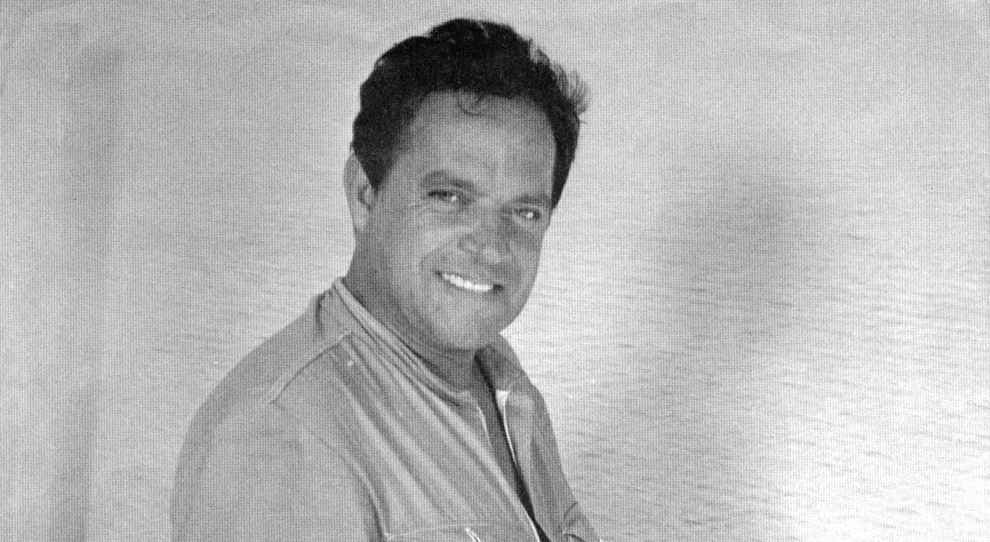
Piero Guccione was born on May 5, 1935, in Scicli, in the province of Ragusa, in southern Sicily. His family, consisting of his father, a tailor, his homemaker mother and two other brothers, was petty bourgeois. Thanks to his father’s complicity, in 1948 Guccione left the classical studies he had undertaken to devote himself to painting and drawing full time. He attended the Comiso art school at first, while later he was a student at theCatania art institute, where he graduated in 1954. In the same year his father passed away, and shortly thereafter Guccione moved to Rome. He enrolled at the Academy of Fine Arts, but stayed there for only a month as he found the experience not stimulating enough. In the meantime, he had enrolled in a parastatal school of advertising poster design for out-of-towners, which guaranteed him a minimal financial subsidy. He began working in a graphic design studio in Rome, where he tried his hand at creating publicity posters, caricatures, and decorative objects, becoming familiar with different means of expression, however without ever painting.
He soon came into contact with various Roman artistic personalities, assiduously frequenting the neo-realist painters of the Il Pincio Gallery, located in Piazza del Popolo, and introducing himself to Renato Guttuso with some of his drawings in 1955. For about ten years, from 1958 to 1969, Guccione took part in a series of paleoethnological missions to the Libyan side of the Sahara Desert to survey prehistoric paintings and graffiti. As a result of these activities, he organized an exhibition of the paintings found at Columbia University in New York that later became a traveling exhibition at major American universities. Meanwhile, Guccione set up his first solo exhibition on April 23, 1960, at the Galleria Elmo in Rome, introduced by art critic Duilio Morosini. In 1966 he participated for the first time in the Venice Biennale, and in the same year he became an assistant to Renato Guttuso at the Accademia delle Belle Arti in Rome, and then became a tenured professor until 1969.
Between the 1970s and 1980s, Guccione often returned to exhibit at the Venice Biennale.
In 1979 he returned permanently to Sicily, near Modica, and built a house-studio that was highly renowned among his countrymen. Meanwhile, Guccione had won several awards abroad, and in 1988 a solo room was dedicated to him inside the Italian Pavilion of the Venice Biennale.
The 1990s and early 2000s were punctuated by several awards and honors bestowed on him. In 1995 he was named an Academician of San Luca, in 1999 he received the Special Prize for Culture of the Presidency of the Council of Ministers, and in 2004 he received the Gold Medal of the Presidency of the Italian Republic as a well-deserving person of art and culture. He was, in addition, dedicated a documentary film entitled Piero Guccione, towards infinity (2011). The documentary was screened at the Rome International Film Festival and the Venice Biennale. Guccione died in his home-studio on October 6, 2018, at the age of eighty-three.

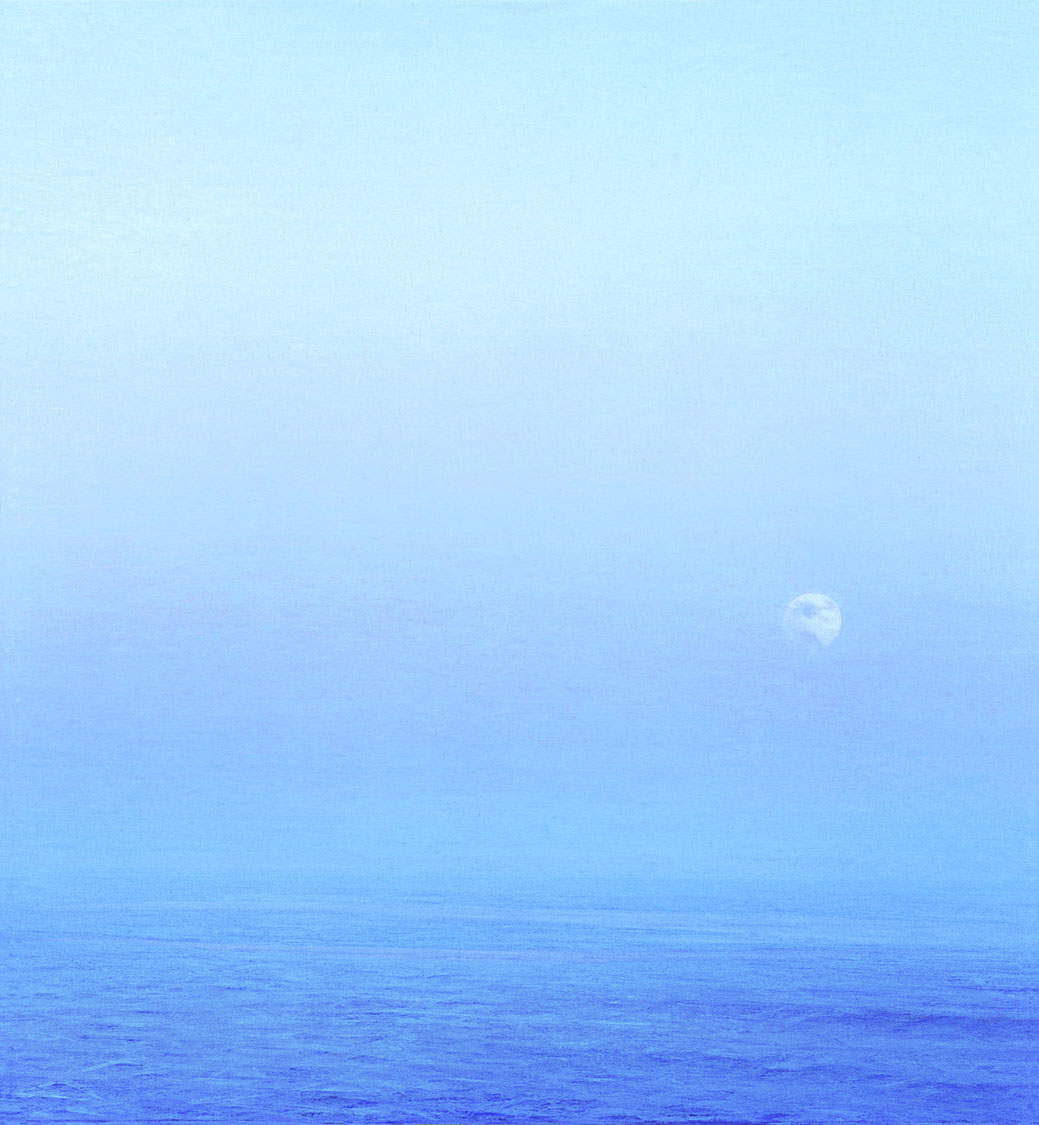
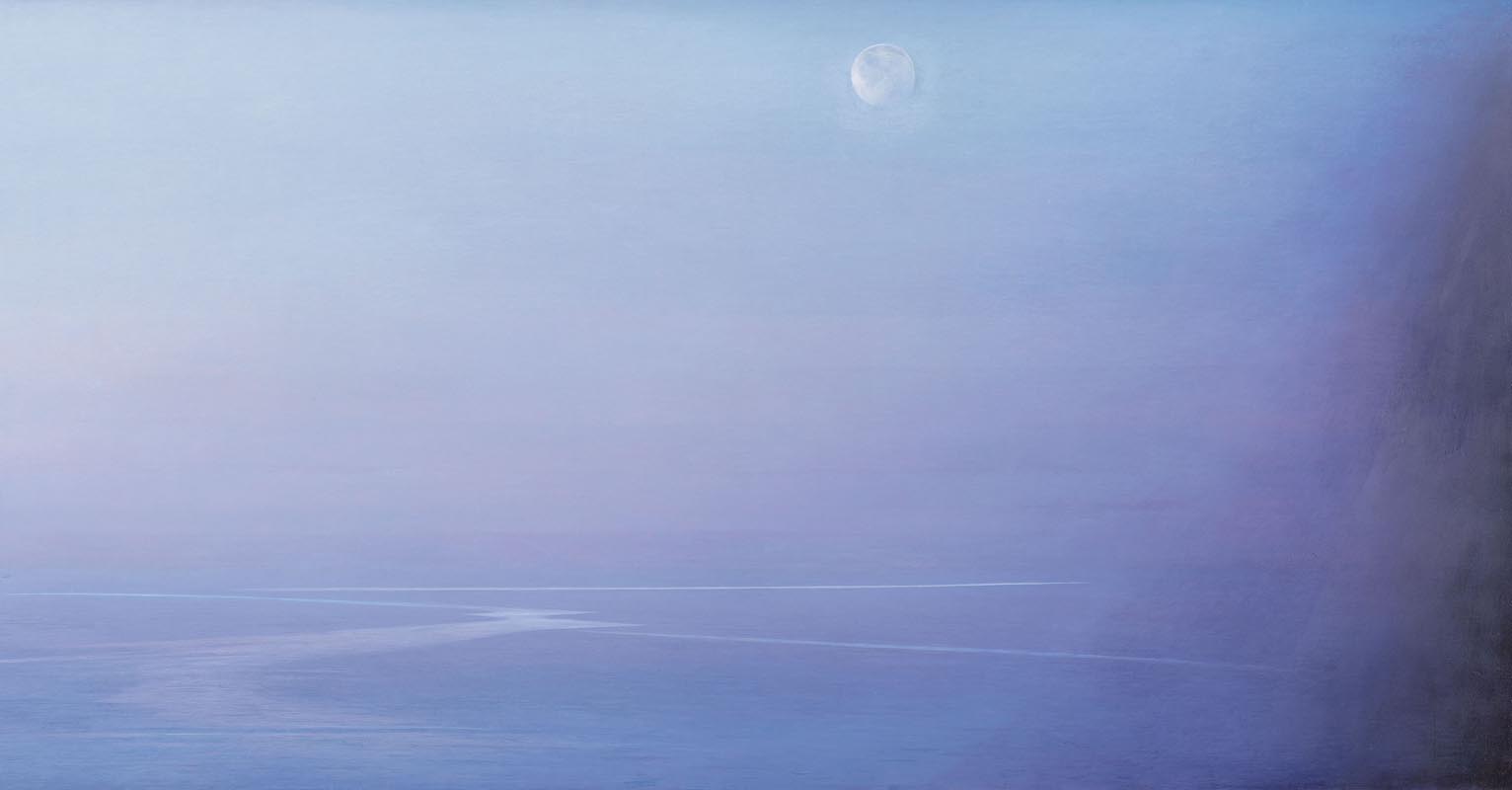
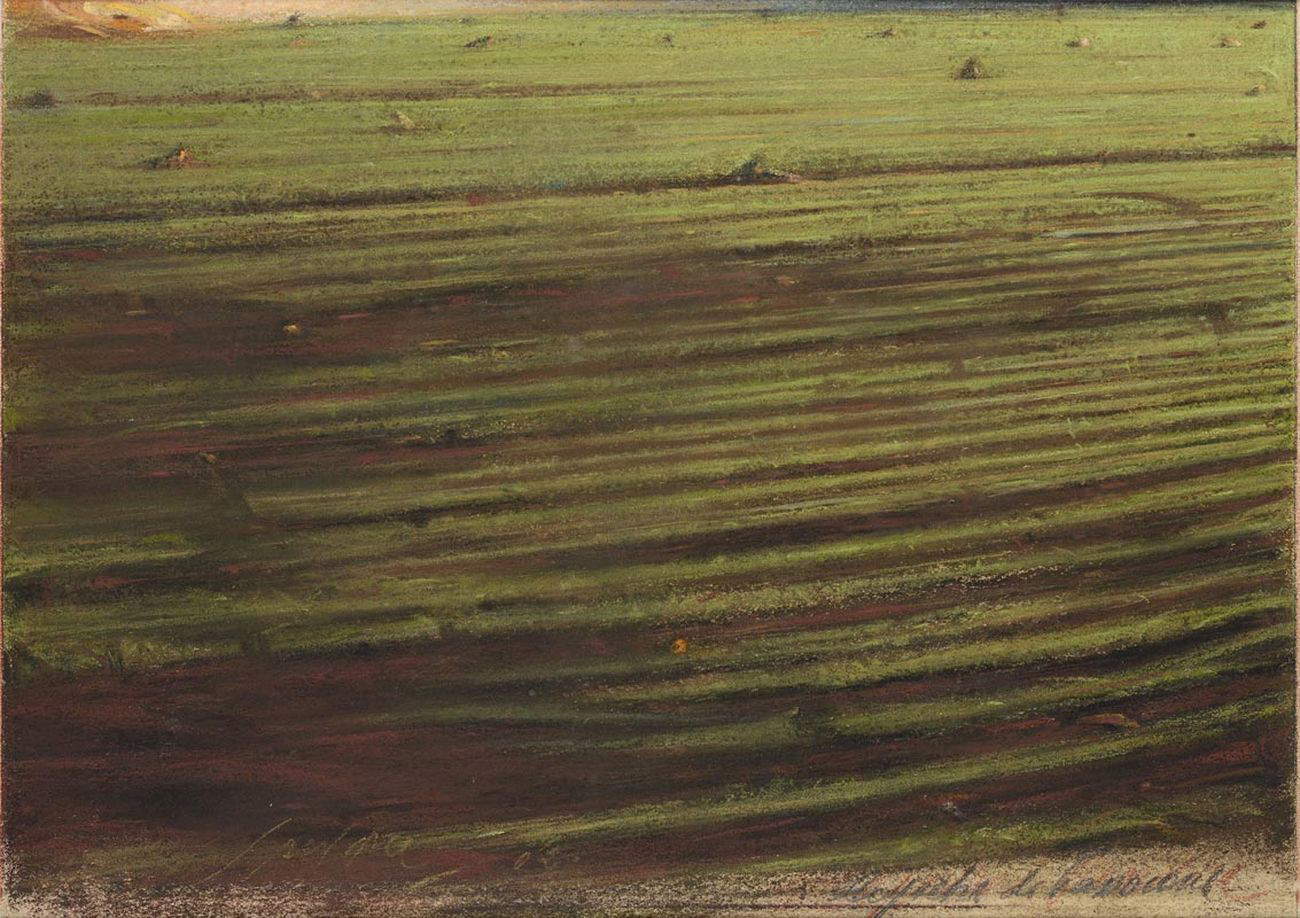
In reference to his art, Guccione said, “I am a visual [...]. I start from an emotion that is gradually amplified. Then a reflective side is added, so an element is added, particular contents related to the territory, to society, to the general sense of life. The fundamental basis that makes me start is always the relationship with visibility, that is, on what my eye, my heart, my mind perceive of reality.”
He went through different phases in his painting, starting from beginnings closer to ’impressionism, then frequently depicting boundary walls and antennas, until gradually arriving at the stylistic signature that made him unique and definitely recognizable in the panorama of contemporary Italian art, namely his famous glimpses of marine expanses. In the artist’s intent, these views were to be considered neither landscape paintings nor still lifes, as he identified in the line of the horizon that unites sea and sky the expedient through which to give life to a universal, timeless, place-less and silent image, capable of emotionally involving the viewer by connecting him to his deepest self. It is no coincidence that the horizontal composition and the recurring different shades of blue instill a feeling of calm and facilitate relaxation, meditation, and contemplation, leading to complete reconciliation with oneself and the world.
The choice of the sea resided in the fact that Guccione had observed its waves and movements for a long time in his life, and even when he lived in Rome he retained precious childhood memories related to the sea.
In these works Guccione made an important operation of reducing any spatial reference, in favor of a minimalist environment that guarantees the viewer a totally immersive experience to leave the surrounding world behind. After all, in 1973 the Sicilian writer Leonardo Sciascia, a friend of Guccione’s, in the context of a presentation of one of his exhibitions in Palermo coined the term “platitude” to define his painting, precisely to emphasize its ability to go beyond earthly time. Guccione’s first maritime view is dated 1967, entitled On the Beach of Sampieri. The particularity of this work was an obvious influence of Edvard Munch, a Norwegian artist whom Guccione loved so much that he traveled to Oslo to follow in his footsteps. In 1970 he made the first painting in this vein, The Lines of Sea and Land. The two works Sul far della luna and Il grido della luna, both from 2000, are, however, its final conclusion. Before arriving at the outcomes of these celebrated marine works, in the years of his pictorial beginnings Guccione became a member in Rome of the group Il pro e il contro, formed by Ugo Attardi, Ennio Calabria, Fernando Farulli, Alberto Gianquinto, Piero Guccione, Renzo Vespignani and critics Antonio del Guercio, Dario Micacchi and Duilio Morosini.
Known works from the 1960s include the cycle Città riflessa (Reflected City), in which he proposed a series of landscapes reflected on the body of an automobile. Then between 1969 and 1970 he painted another group of works to which he gave the title Attese di partire (Waiting to Leave), consisting of nine canvases numbered from 1 to 9. The cycle was then exhibited in 1970 in Bologna at the Forni Gallery. After his return to Sicily in 1979, Guccione soon became a point of reference for a group of artists who took the name Gruppo di Scicli, united by their passion for painting and sculpture.
Between 1981 and 1985 a change took place in Guccione’s art, who abandoned oil painting for a time, preferring drawings and pastels. Already in 1981 he was present at the Il Gabbiano gallery in Rome with about twenty pastels dedicated to the subject of the carob tree, typical of Sicily, represented now dying, a cue for a series of reflections around the transience of life.
Also dated to 1984 are about thirty-three pastels entitled Journey around Caspar David Friedrich, with which Guccione wished to pay homage to the works of the German artist, whom he had had the opportunity to admire in Paris in 1977 as part of an exhibition devoted to Romanticism in painting.
Around 1987 he devoted himself to a number of tributes to the masters of painting, including Caravaggio, Giorgione, Correggio, Leonardo, Masaccio, Michelangelo, and Pontormo.
The 1990s continued under the sign of continuity, leading up to the 2000s, a period in which his works reached imposing dimensions, such as the 440-cm canvas he created together with Franco Sarnari, Piero Roccasalva and Giuseppe Colombo for the vault of the hall of the Garibaldi Theater in Modica, while in 2006 he created another large canvas entitled Il nero e l’azzurro (The Black and the Blue ) for Palazzo Madama, the seat of the Senate of the Italian Republic in Rome. The work is still preserved inside the Italia room. Other works from the early 2000s are The Stones on the Fields of Passo Cane (2002), in which the field territories of the far end of eastern Sicily are depicted, and August Moon (2005). In 2010 he made two altarpieces for the Baptistery of the Basilica of Santa Maria degli Angeli e dei Martiri in Rome, in which he depicted the encounter between Jesus and Mary Magdalene on a seascape.
One of the activities in which the artist was often involved was the illustrations of literary works for important Italian publishing houses. It is worth mentioning the illustrations dated 1963 for Stendhal’s Il rosso e il nero , published by Parenti, which by the way was one of his first documented artistic works, while in 1986 he elaborated fifteen pastels accompanying the short story Senso by Camillo Boito, published by Edizioni Franca May with an introduction by Alberto Moravia. In the same year he had also devoted himself to a series of pastels, many of which were included in a collection of poems by Giorgio Soavi, printed in 1987 by Grafica dei Greci. Finally, a reissue of Galileo Galilei’s Discorsi intorno a due nuove scienze was published in 2001, with a preface by His Holiness Pope John Paul II and ten engravings signed by Guccione.
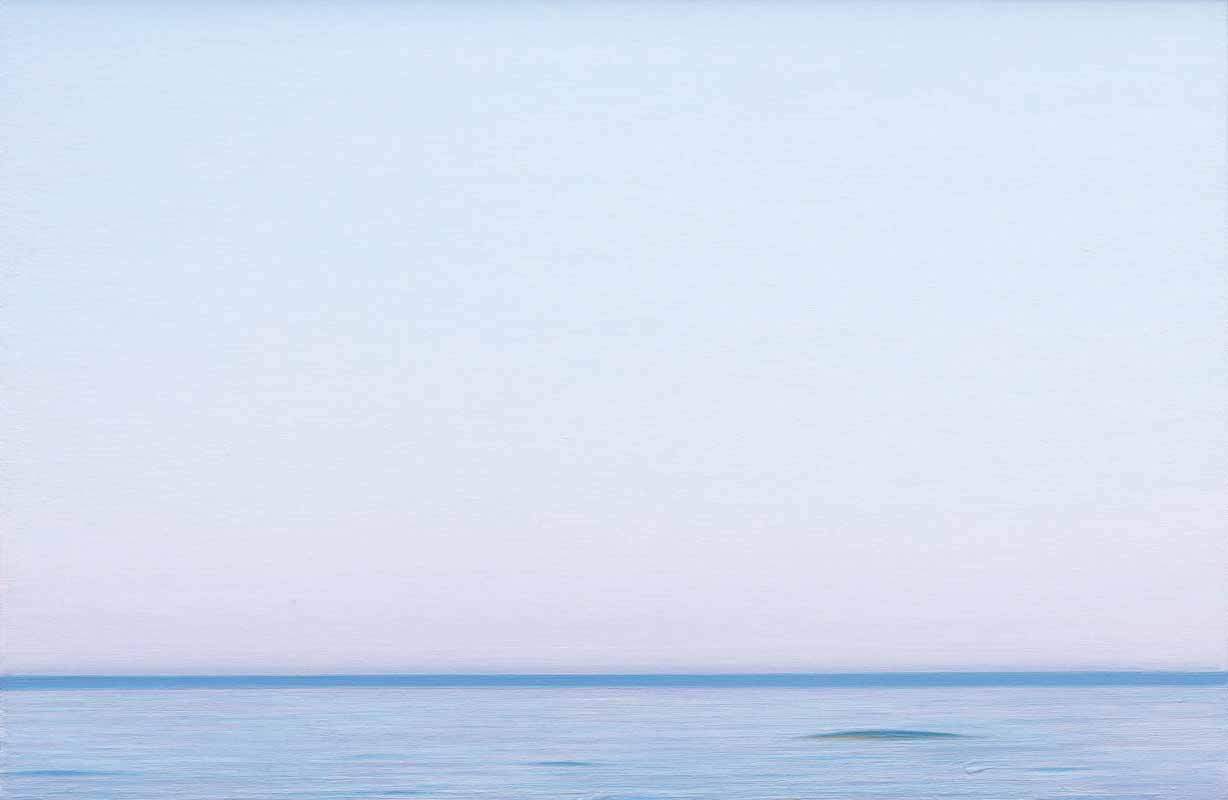
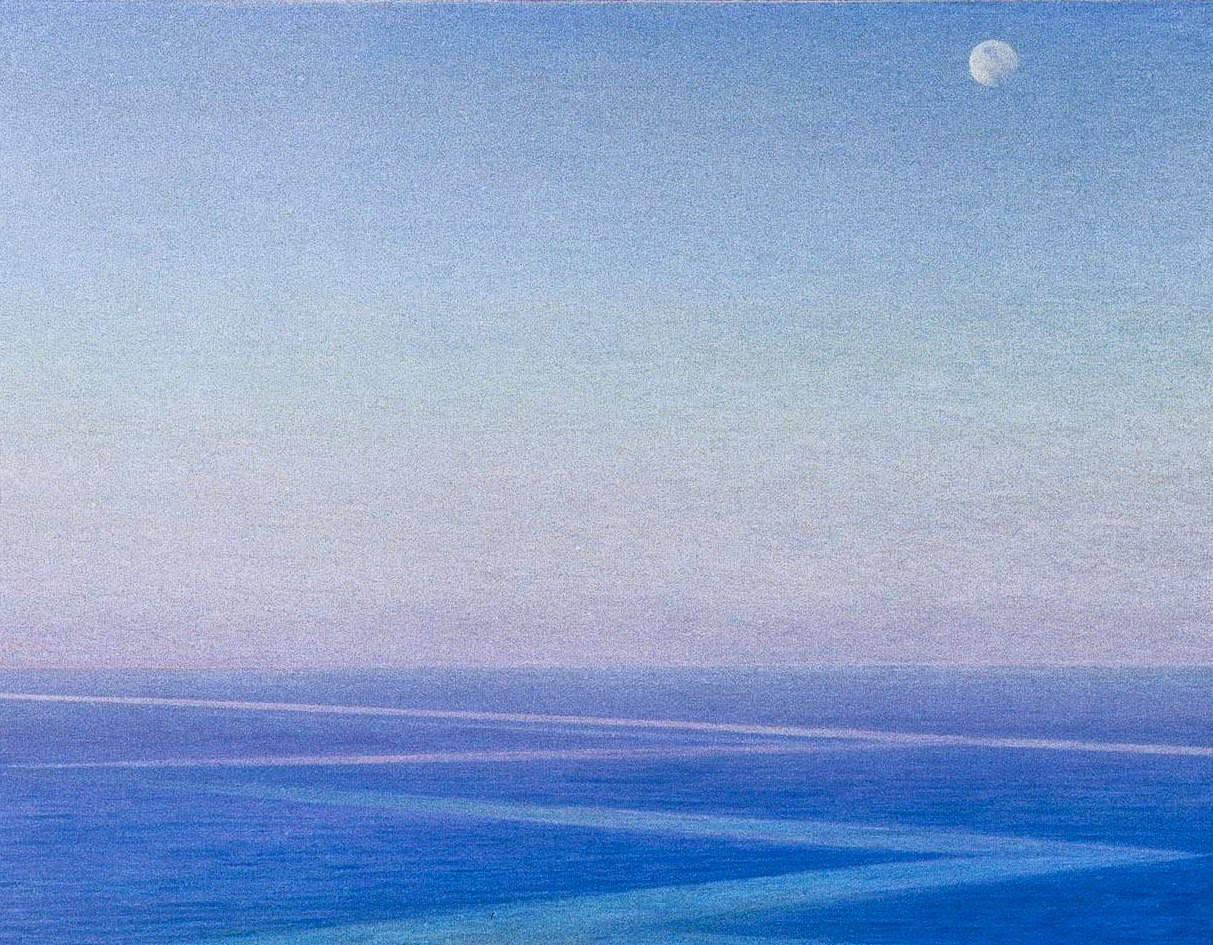
Piero Guccione, July Morning at Punta Corvo (2001-2003; oil on canvas, 70.2 x 128.3 cm; Private Collection)
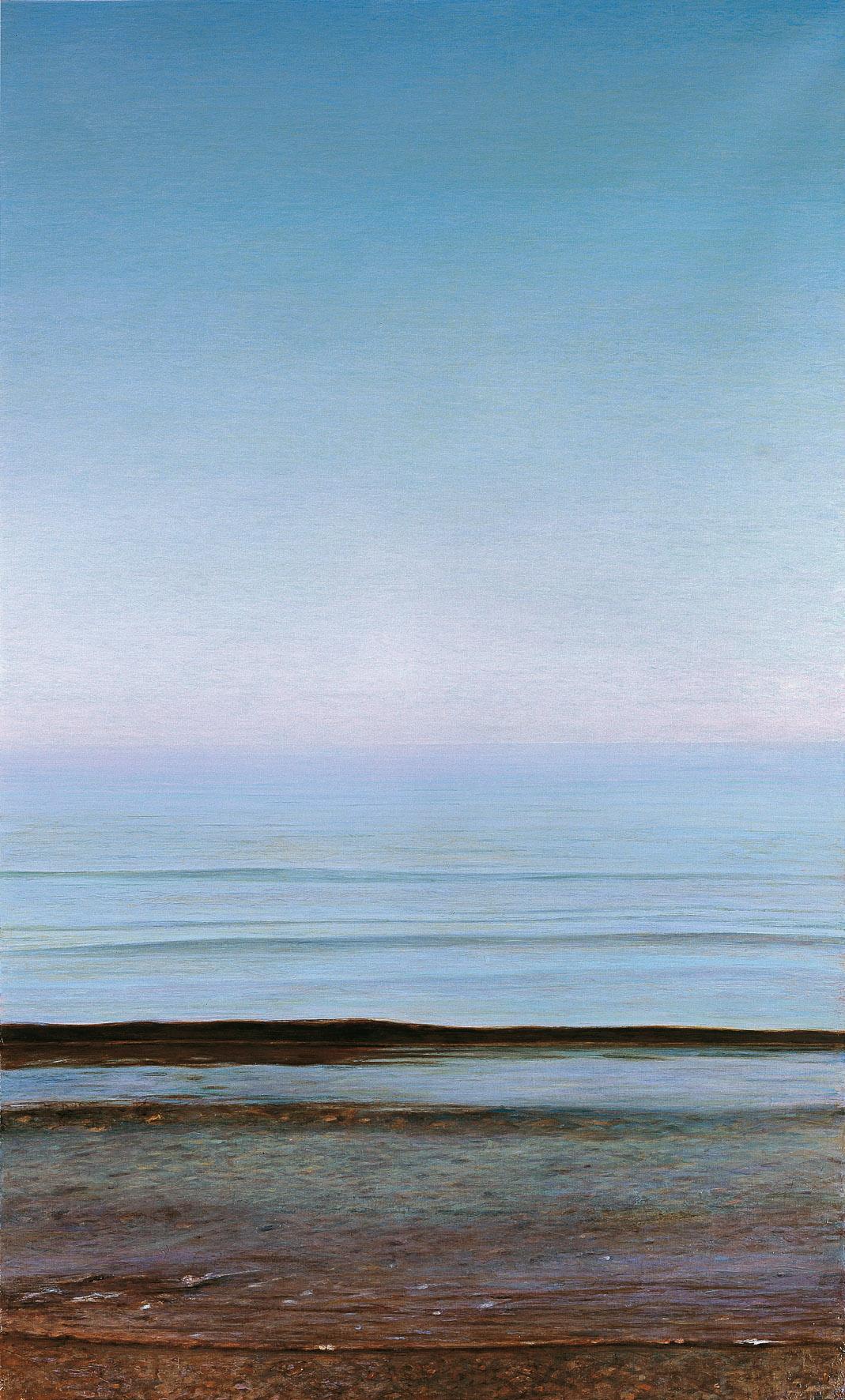

In 2018, Piero Guccione’s daughter Paola decided to establish an Archive dedicated to her father in Rome, a nonprofit association whose goal is to promote awareness of Piero Guccione’s works and catalog his complete oeuvre. One of the center’s activities is to build a catalog raisonné of the artist’s works.
Another activity is to organize exhibitions and other initiatives where Guccione’s works, most of which are part of private collections, can be exhibited. One of the most important and comprehensive exhibitions organized by the Piero Guccione Archive took place in the Mendrisio Museum of Art in Mendrisio, Switzerland, in 2019, in his memory after his death a few months earlier.
Also in Rome, it is possible to see the work Il nero e l’azzurro (2006), as part of the collections of the Senate of the Italian Republic, and it is possible to see two of his altarpieces with the encounter between Jesus and Mary Magdalene, dated 2010, in the Baptistery of the Basilica of Santa Maria degli Angeli e dei Martiri
Finally, some of his graphic works are kept in the permanent collection of the Metropolitan Museum of Modern Art in New York.
 |
| Piero Guccione, the painter of the sea. Life, style, major works |
Warning: the translation into English of the original Italian article was created using automatic tools. We undertake to review all articles, but we do not guarantee the total absence of inaccuracies in the translation due to the program. You can find the original by clicking on the ITA button. If you find any mistake,please contact us.